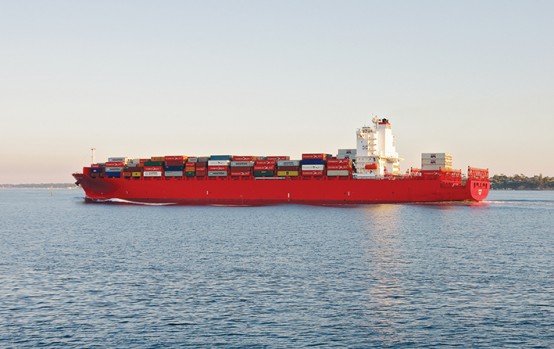
FRANKSTON Council is banking on the $12 billion development of a container port at Hasting to achieve one of its main aims: jobs.
Frankston mayor Cr Darrel Taylor said an “impact analysis” of the expanded port by consultants GHD estimated an average 400 jobs being created each year over the next 30 years.
“Frankston is strategically positioning itself as the government and commerce hub for the Port of Hastings given our proximity, lifestyle attributes and metropolitan activity centre status,” Cr Taylor said.
His statement was issued in the same week that Mornington Peninsula Shire mayor criticised a Labor Party proposal to abandon Hastings in favour of building a new port near Geelong.
The statements of the two mayors will put Frankston and the Mornington Peninsula councils on a collision course with Labor if it wins the November state election. However, not all municipalities in the Western Port region are as welcoming of the proposed port with Bass Coast Council sponsoring a five-day workshop looking at alternative scenarios for the future.
The current government has committed $110 million over four for the Port of Hastings Development Authority to plan for an expanded port by the mid-2020s.
The GHD report relied on by Cr Taylor comes a month after the release of a study by Victoria University researchers Dr Hermione Parsons and Peter Van Duyn.
Their paper, Build it – but will they come?, questions the economic viability of a container port at Hastings, suggesting that there is no need for Victoria to have a port capable of receiving the world’s largest container vessels and claiming that their cargoes either originate or are destined for businesses west of Melbourne.
Dr Parsons and Mr Van Duyn say the decision about the location of Victoria’s next major port is too important to be made by politicians.
Support for the Port of Hastings by the two mayors was reinforced last week by Ports Minister David Hodgett who said the Build it – but will they come? report contained “many inaccuracies”.
“To stick one’s head in the sand and mount arguments based the false belief that larger ships will not come here will have huge implications on Victoria’s economic prospects,” he said.
Mr Hodgett said Victoria needed the “sort of visionary thinking” of former Victorian premier Sir Henry Bolte who “zoned land in Hastings for port use back in the 60s”.
At the time, Sir Henry envisaged Western Port as being the “Ruhr of the south” – emulating Germany’s massive industrial centre – and said petrochemical companies facing tough environmental laws in Europe should be invited to operate at Hastings.
When asked about atmospheric pollution, Sir Henry replied: “it’ll blow away”.
Cr Taylor said the GHD report indicated that the benefit to the region would be $60 million a year during the construction phase and $1 billion a year once fully operational.
The report was prepared for a consortium of 10 local government authorities including Frankston, the Southern Melbourne and Gippsland Regional Development Australia (RDA) committees, United Energy and Connect East.
“The Port of Hastings development provides an enormous opportunity to support and expand our local economy and job supply,” Cr Taylor said.
“We have already approved first-class office facilities perfectly suited to government departments and commercial entities with linkages to the port.”
Cr Taylor said the GHD study found that construction of the container port at Hastings would mean a “beneficial economic impact of an average of $60 million a year in gross regional product” over 30 years.
This would eventually lead to an extra 5700 jobs by the mid-2030s and 15,200 jobs by the early 2050s.
Cr Celi dubbed the Labor Party plan for a new container port near Geelong “fundamentally flawed”.
“The proposal to build an eight kilometre-long pier is problematic enough, but when you consider the amount of dredging that would be required to accommodate the larger vessels, it just doesn’t stack up – particularly when Hastings is already a natural deep water port,” Cr Celi said.
Before Cr Celi’s endorsement of expanding the Port of Hastings, the shire’s position had been to give “in principle” support.
“However, this support has been conditional on satisfactory resolution of the issues raised by the community, particularly ensuring that Hastings is further developed as an environmentally sustainable ‘green port’, and that the necessary transport infrastructure is provided ahead of demand to avoid adverse traffic and rail transport impacts on the shire’s townships,” officers stated in a report to councillors last week.
“The business case should also clearly identify the economic benefits to the Shire and the south east region.”
The state government has not released cost estimates of upgrading rail and road links to service the new port.

